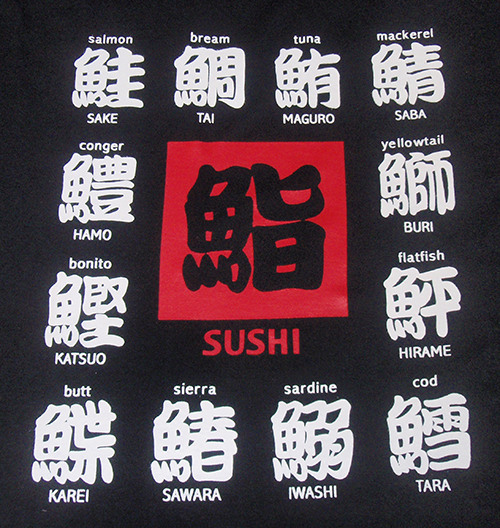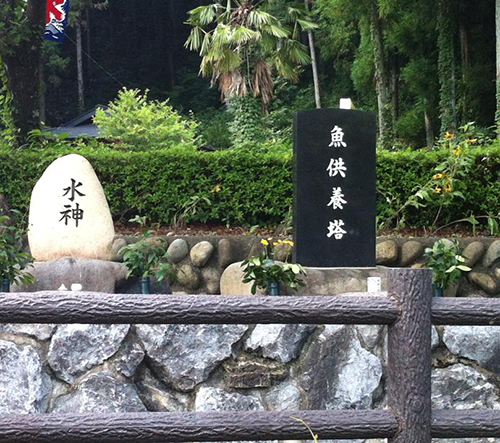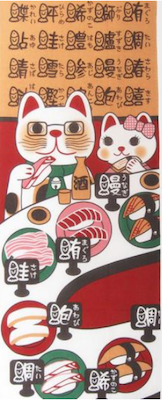195. The "Fish" Radical: 魚
When it comes to most aspects of the "fish" radical 魚, things are straightforward. This radical is on duty in only three Joyo kanji, including the autonomous 魚 kanji itself.
To understand the radical, we should start by looking at that character:
魚 (98: fish)
This 11-stroke shape is a pictograph of a "whole fish," according to Henshall in his newer edition. So even though the four dots at the bottom look exactly like 灬, a variant of the "fire" radical, they instead represent a tail. That's a relief; I would hate to think this fish was grilled from the get-go.
What Is the Japanese Name for the "Fish" Radical?
The 魚 kanji carries three Joyo readings: うお, さかな, and ギョ. The first two matter here, as they pop up in the radical names.
That is, we can refer to the 魚 radical of the 魚 character as うお or as さかな. (Well, Nelson includes the さかな reading, but Kanjigen does not.)
When the radical shifts to the left side of a kanji—the -へん (-偏) side—the names うおへん and さかなへん become appropriate, as with these two kanji:
鯨 (1208: whale)
鮮 (1501: fresh; vivid; skillful; Korea)

Photo Credit: Eve Kushner
I often exercise with these fish. That is, they appear on a T-shirt that I wear for workouts. All 13 of these kanji feature the left-side 魚 radical, and all are regrettably non-Joyo, including the important character at the center:
鮨 (すし: sushi)
Why is this crucial kanji non-Joyo?! People more often render すし as 寿司, but neither character features a "fish" radical, so how satisfying is that?
Photo courtesy of Ruri Kippenbrock
This photo is of a tenugui (手拭い, てぬぐい: hand towel) made by Ruri Kippenbrock. The artist cleverly replaced each "fish" radical with a drawing of a fish! As you can see (particularly from the furigana alongside each kanji), many of her sushi offerings match those on my shirt.
What Do a Capital and a Sheep Have to Do with It?
The 鯨 and 鮮 characters offer the only unexpected twists on the "fish" radical. Why would a capital (京) lie inside a whale, and what does a sheep (羊) have to do with freshness? Let's look at the etymologies:
鯨 (1208: whale)
In this kanji, says Henshall's newer edition, the phonetic 京 conveys "big." Thus, we have "big fish," which is to say "whale." (Many millennia after this character emerged, people realized that a whale is actually a mammal, not a fish.)
鮮 (1501: fresh; vivid; skillful; Korea)
Henshall offers four interpretations, none of which make much sense to me. Thank goodness for Kanjigen, which says that in 鮮 the 魚 and 羊 respectively mean "fish" and "sheep" and that 鮮 originally meant "raw meat." That is, 鮮 stood for "meat from a freshly slaughtered animal."
Photo Credit: Eve Kushner
In a sign for the Tokyo izakaya 眞花 (しんか), the non-Joyo 眞 (the old form of 真) means "truth, reality." Though 花 (か) doesn't appear on the sign, the flowers (花) are probably supposed to represent that meaning and sound!
As intriguing as such a substitution is, the smaller writing is of more interest to us because this word contains two "fish" radicals:
鮮魚 (せんぎょ: fresh fish)
Here we have a fish sandwich!
I like how 天然 (てんねん: nature) precedes the term, giving us three consecutive instances of 灬. (But with 然, the four dots do represent the "fire" radical. For more about this, see Radical Note 86, where you can check both the etymology of 然 and the caption to the same photo.)
The phrase 天然鮮魚 indicates that the fish have been caught in natural environments, not at fish farms. In the second line, 大串焼き (おおくしやき) means "big grilled skewers."

Photo Credit: Yuta Yamada
Are you feeling bad about all the fish killed for our dining pleasure? It seems that someone in Gifu Prefecture on Honshu has struggled with guilt because a memorial tower to fish stands at Kankoyana, a Seki City riverside restaurant where one can catch 鮎 (あゆ: sweetfish, a non-Joyo kanji) and then eat what one has caught.
The writing on the black stone is as follows:
魚 (probably read as さかな in this case)
供養塔 (くようとう: memorial tower)
The word on the white stone is 水神 (すいじん: the water god). I guess it's best to get him on your side if you're cultivating fish.

